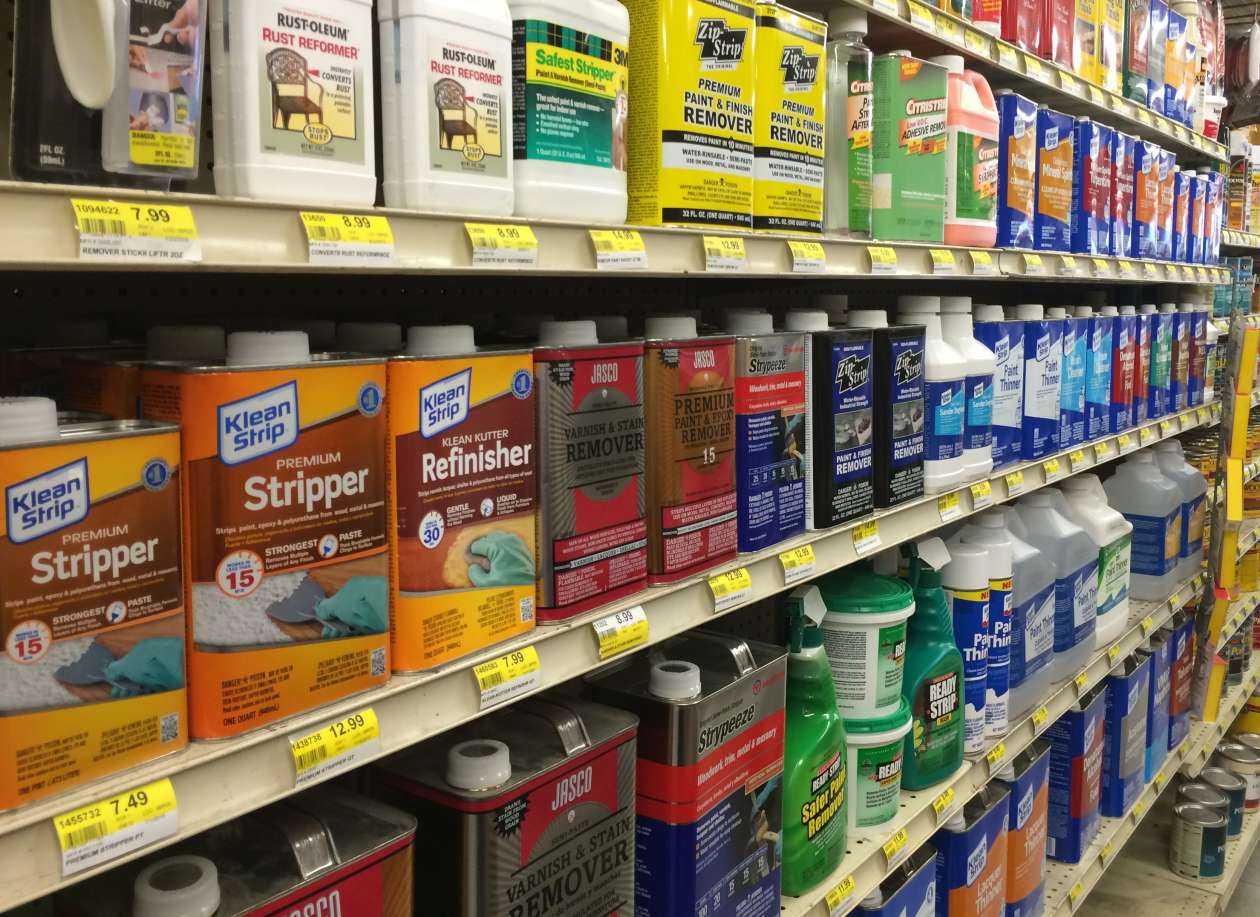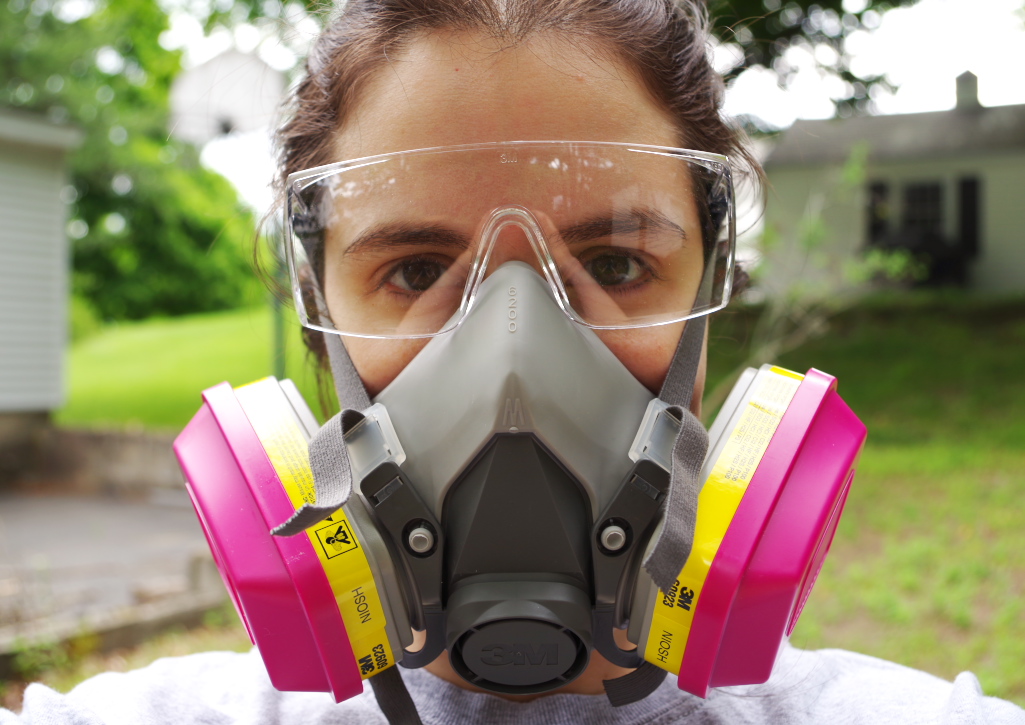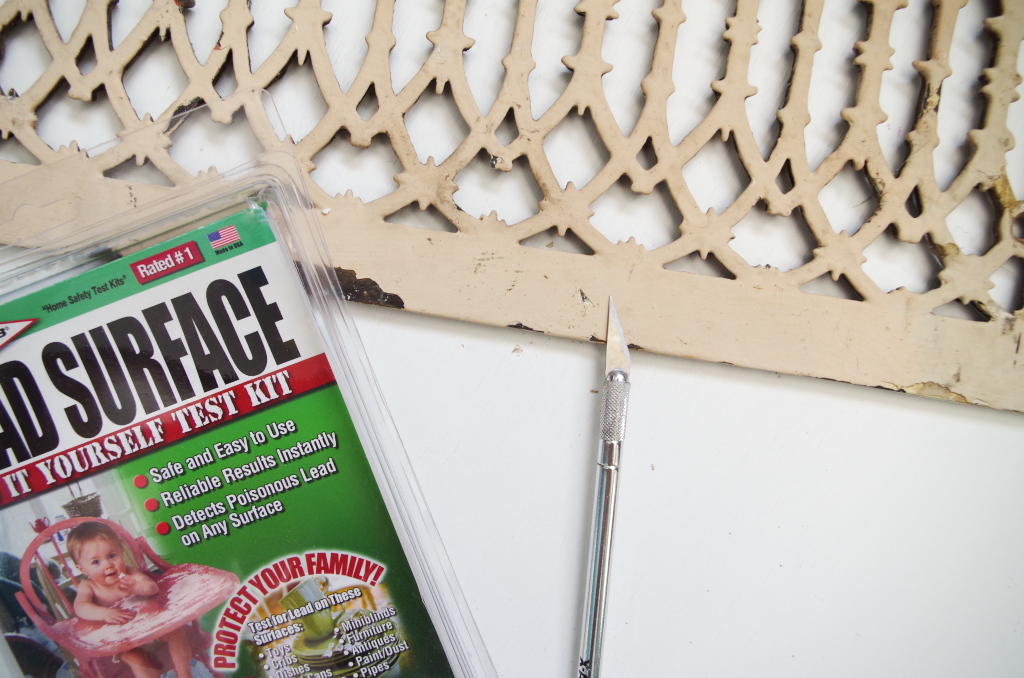DIY is an area of my life where well–documented eco ideals sometimes come in conflict with themselves. On the one hand, re-using and recycling stuff is awesome. On the other hand, using terrible, hazardous, self-and-earth-destroying chemicals to restore stuff is not awesome.
There is a balance to be struck here – I’m not saying that we can’t use wood stain in a well-ventilated area. But one area where that balance is way out of whack is the many types of paint strippers currently on the market. These products are really bad.

Photo by Jamie Smith Hopkins/Center for Public Integrity via here and here.
And by really bad, I mean that they kill you. And not just in the long-term: fumes from Methylene chloride, a common ingredient in consumer paint strippers, lead to immediate death when used in a poorly ventilated area (like a bathroom).
It kills in many ways. It enters the body and converts to carbon monoxide, triggering a heart-attack by lack of oxygen, and also acts as a anesthetic, shutting down your ability to breathe. In the presence of an open flame, it also turns into phosgene, a deadly gas used in World War I. Its led to more than 50 direct deaths since 1980 (and likely more, since heart attacks and at-home deaths may not be fully attributed) and is banned in the EU, but for some reason there isn’t even a warning label about this.
Even if it doesn’t kill you right away, it might in the long-run. Methylene chloride is also linked to liver toxicity, liver cancer, and lung cancer. Other common ingredients in paint removers include N-Methylpyrrolidone (reproductive and developmental toxicity), Toluene (central nervous system effects, excreted in breast milk), and Dimethyl sulfoxide (a developmental neurotoxin which quickly degrades Nitrile gloves, the common DIYer protection). Safer alternatives like Benzyl alcohol are still pretty nasty to be around.
Gross.

WHAT TO DO INSTEAD OF USING TOXIC PAINT STRIPPERS
Okay, so what can you do instead of using these paint strippers? I am not someone who is going to stand opposed to finding awesome old stuff and taking it home to be transformed (just look at my basement). And I also know that awesome old stuff is often covered in gross old paint. So what are some safe ways to remove paint?
- Remove Paint from Metal using Water and Baking Soda: For metal fixtures that are covered in old paint, you can remove it by boiling in a mixture of water and baking soda for a little while, and then scraping off the softened paint.
- Remove Paint from Wood using a Heat Gun: For old furniture, a heat gun can be used to soften paint to then scrape off. They can be purchased for $20-$100, and go ahead and use this as a good excuse to buy a new tool.
- Sanding: An old standby, but it works! Just wear a mask so you don’t breathe in the dust.
- Test for Lead and Know How to Say “No”: Sanding, boiling, and blasting with heat are not safe ways to remove lead paint. There really isn’t a safe way to do this, and lead is really bad. So, before getting your heart set on a project, use a home lead test to check the paint on your old furniture or fixtures. If it is lead, walk away. It’s not worth it.

- Ammonia, Borax, and Washing Soda: I’ve never tried it, but supposedly a mixture of ammonia, borax, and washing soda is a workable, home-made paint remover. This isn’t a mixture that you really want to be breathing in (ammonia isn’t great to inhale) but it is better.
There are also some paint thinner products out there that claim to be comparatively safe. I’ll point out that “comparatively safe” is still not “safe” – but, if you must use a product for this, do your research, use one of those, and use it outside on a breezy day.
STILL MAD?
You should be! Just because you know how to avoid death while shopping in your local hardware store, doesn’t mean that death should be so easy to purchase by others. Or that using dangerous products should be part of someone’s regular workday. Really all paint strippers are somewhat dangerous, but the worst ones – the ones that cause immediate death, cancer, or reproductive harm – shouldn’t be on the market.
Right now, the EPA is considering a rule to ban the two worst of these chemicals – methylene chloride (DCM) and N-methylpyrrolidone (NMP) – but public support is needed to get it done. You can add your voice by sending a note to the EPA in support of this rule. If you follow that link, there is a pre-populated letter for you to build from, so it will only take a minute to help!
If this rule passes, a lot of chemical paint strippers would still be available (using the harmful but not quite as bad chemicals) but would take the worst ones off the shelves. It’s really the least we can do, but it is a start.